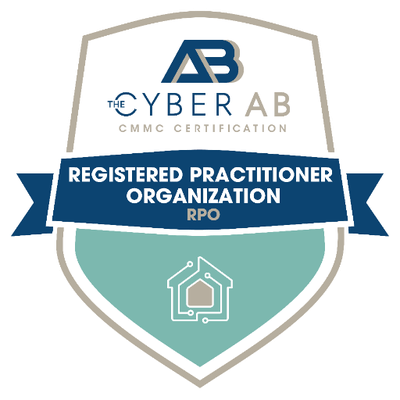Our privacy policy is located here.
Regulations and Compliance
See how risk-based Managed Detection & Response can help you with compliance — regardless of your industry
NYDFS Security Regulation FAQ
A CONVERSATION WITH RON PELLETIER, FOUNDER and CHIEF CUSTOMER OFFICER, PONDURANCE, AND RICHARD BORDEN, COUNSEL, WILLKIE FARR & GALLAGHER LLP
- The cyber regulation standards and if there are any commonalities
- What you need to do to meet SEC requirements
- The difference between privacy regulations and information security regulations
- What are the Department of Labor (DOL) guidelines, and how does it apply to cybersecurity
- How a cybersecurity provider can help you meet new security regulations
Insurance and Legal Partners
Pondurance works with legal and insurance firms, brokers and agents to help their clients improve their cybersecurity posture and reduce cybersecurity risks.
Reach out to us to learn more partners@pondurance.com
If you suspect you have an active breach, please contact us at 888-385-1720.

Keep Up With the Latest Blogs on Compliance and Regulations
Webinar
Reducing the Costs To Comply With CMMC

Successfully Navigating Through CMMC: What You Need to Know

Achieving CMMC 2.0 Compliance

Are you processing controlled unclassified information for Department of Defense clients and required to meet Defense Federal Acquisition Regulation Supplement requirements? Pondurance is here to help you achieve CMMC 2.0 compliance and better understand the gaps in your processes, capabilities, and practices.
Are You Looking for Specfic HIPAA Regulations?
Additional Resources
PCI DSS Compliance Made Simple by Pondurance
As part of Pondurance’s cyber risk and regulatory compliance assessment services, we offer a focused review of your IT systems environment to identify areas of risk and maturity as they relate to Payment Card Industry Data Security Standard (PCI DSS) compliance. READ HERE
Cybersecurity Compliance Framework
Cybersecurity compliance framework stands as a critical pillar in managing and mitigating the multifaceted cyber threats that confronts our digital world. Defined in fundamental terms, cybersecurity compliance comprises of a set of guidelines and best practices adopted by organizations to protect their information systems and data from cyber threats. Adherence to these frameworks not only ensures the security and integrity of data but also certifies that organizations meet suitable standards recognized by their industry or regulatory bodies.
Having established what cybersecurity compliance entails, it’s pertinent to delve into the diverse cybersecurity frameworks that exist across different industries. From the robust National Institute of Standards and Technology (NIST) Cybersecurity Framework, widely regarded as the gold standard, through to the ISO 27001, COBIT, CIS and the like, these frameworks offer a structured and standardized approach towards managing cyber risks. Each of them has their unique constructs but all aim to provide detailed guidance to secure information systems.
To draw a cybersecurity frameworks comparison, let’s consider the NIST framework. This structure, provided in PDF form for easy accessibility and dissemination, provides an elaborate tiered system that allows organizations to define their current and projected cybersecurity posture. Compared to other frameworks, the NIST cybersecurity framework strikes a balance between comprehensive guidelines and flexible application, making it an industry favorite for many.
Another widely accepted cybersecurity structure is the ISO 27001. This standard emphasizes the importance of establishing, implementing, maintaining, and improving an information security management system (ISMS), providing a checklist of controls for a holistic management of information security.
In such a complex and high-stakes area as cybersecurity, it’s vital for organizations to partner with industry specialists in maintaining compliance. Pondurance, a leading cybersecurity solutions provider, brings its extensive expertise to bear in helping customers navigate through their cybersecurity journey. Offering services such as threat hunting and response, compliance assurance, and security consulting, Pondurance helps its customers to stay abreast with cybersecurity standards and frameworks, thereby helping to reinforce their digital safety nets while facilitating compliance according to their respective industry regulations.
Compliance Frameworks List
In navigating the complexities of cybersecurity, one faces a multitude of compliance frameworks, each with its unique attributes and requirements. Often, these regulatory compliance frameworks serve as roadmaps, their protocols crucial in identifying vulnerabilities and safeguarding data. A comprehensive grasp of these compliance expectations is key to fostering a secure cyber landscape.
One sterling example is the Payment Card Industry Data Security Standard (PCI DSS), which is essential for firms processing card payments. This framework ensures strict adherence to safeguarding customers’ payment information to enhance trust and foster smooth transactions.
Similarly, the Health Insurance Portability and Accountability Act (HIPAA) serves as a vital regulatory framework across the medical industry. HIPAA mandates the protection of patients’ sensitive health information, thus ensuring the confidentiality and integrity of medical records.
On a global level, frameworks such as the General Data Protection Regulation (GDPR) take precedence. GDPR is critical in ensuring the privacy and protection of European citizens’ data, requiring businesses operating in these regions to adhere to stringent regulations around data protection.
For industries that focus on national security, the Federal Information Security Management Act (FISMA) prescribes a series of obligations designed to eliminate potential threats, fostering a robust and secure operational environment.
One might be overwhelmed by the task of simultaneous adherence to multiple regulations. Nevertheless, solutions such as the unified compliance framework come to the rescue. This model streamlines various compliance protocols into a unified, coherent system, maximizing efficiency in compliance management.
Pondurance services excel at helping users meet these diverse compliance requirements, their industry-specific strategies enabling secure operations even in demanding environments. Through Pondurance, companies can navigate the complexities of multiple security compliance frameworks, confident in their industry compliance and data protection standards.
Security Control Frameworks
Implementing rigorous security control frameworks has become a critical task for businesses as they navigate the complex world of cyber threats. Among the array of compliance benchmarks, the Secure Controls Framework (SCF) stands out for its comprehensive design and broad applicability, often presented in formats such as secure controls framework excel and secure controls framework pdf for easy accessibility.
SCF aims at providing a one-stop solution for multiple cybersecurity needs. The versatility of this framework lets it accomplish security control framework mapping, aligning various controls with relevant cyber security standards. This mapping process allows for better visibility of potential vulnerabilities and gaps, addressing the multifaceted components of the cyber security framework.
A robust cybersecurity framework is typically composed of several key components including identify, protect, detect, respond, and recover phases. These dovetail well with the array of services provided by Pondurance, a cybersecurity consulting firm assisting companies on this front.
Pondurance offers comprehensive services such as Managed Detection and Response (MDR), helping businesses develop and maintain a strong cybersecurity compliance checklist. Offering such end-to-end, holistic services supports companies in achieving their cybersecurity objectives in line with industry best practices.
One of the key areas Pondurance focuses on is implementing cybersecurity framework examples into companies’ existing protocols. Having a practical working model allows organizations to visualize and comprehend what it involves, while promoting adherence to set controls. After all, one cannot overlook the fact that navigating the complexities of today’s security landscape calls for not only stringent controls but also insightful, practical, and adaptive methods towards managing cyber threats.
In conclusion, while each organization will have unique security control framework needs based on their industry, understanding the different types and components of prominent cybersecurity frameworks and leveraging services like those offered by Pondurance can greatly mitigate risk and ensure regulatory compliance. Implementing such measures not only means enhanced protection against security threats but also contributes to the overall trust and confidence stakeholders have in the organization.
NIST Cybersecurity Framework
On a continuous basis, and draw real-life applications from the use of “nist cybersecurity framework examples.”
The NIST Cybersecurity Framework, instituted by the National Institute of Standards and Technology, is a comprehensive set of guidelines designed to help organizations manage and reduce cybersecurity risks. These guidelines not only offer broad critical infrastructure protection but are also tied into the quintessence of maintaining adherence in an evolving digital landscape.
Among the many effective tools to evaluate the robustness and resilience of an organization’s cybersecurity posture is the “nist cybersecurity framework assessment tool xls”. This modality offers an easy-to-use, dynamic platform to measure and benchmark cybersecurity controls, ensuring optimal alignment with NIST standards. This acts as a thread that links understanding threats, implementing protective measures, and maintaining operational resilience within an organization.
To validate and reinforce compliance, “nist cybersecurity framework certification” serves as a powerful instrument. This certification authenticates an organization’s commitment to implementing a robust cybersecurity command structure. It signals to stakeholders that cyber threats are recognized and addressed in a systematic, comprehensive manner thus promoting trust and assurance.
Breaking down the “nist cybersecurity framework full form”, it consists of five principal steps: Identify, Protect, Detect, Respond, and Recover. These coalesce to form an iterative process that ensures security controls are continuously optimized, threats are identified, countered, and learned from – a cycle that drives constant improvement.
Pondurance services provide an ideal support system to navigate these expansive cybersecurity frameworks. From offering expertise in framework application to aiding in sustaining regulatory compliance, Pondurance serves as a trusted partner that helps customer industries stay protected and compliant in an ever-evolving cyber-threat landscape.
HIPAA Compliance
HIPAA Compliance is not just a mere regulation but a fundamental embodiment of the high ethical standards required in the healthcare sector to prevent the misuse of sensitive patient data and foster trust. Adopting a HIPAA compliance framework denotes the comprehensive, well-articulated cybersecurity defense strategy that more healthcare organizations are beginning to integrate into their operations.
The HIPAA compliance framework is not a standalone existence. It is tightly knit with robust control mechanisms, infrastructural adjustments, and tweaks in organizational behavior to create a seamless information protection mechanism. To understand the depth, ponder on a few HIPAA compliance examples: A hospital implementing secure, encrypted communication channels for transmitting patient data or a clinic optimizing its record-keeping practices to minimize unwanted data exposure.
The essence of HIPAA compliance is encapsulated not just in following guidelines but in taking preemptive measures. It shifts the cybersecurity discourse from a remedial conversation to a preventive framework. Every interaction with protected health information (PHI) becomes a channel where medical practitioners, administrators, and third-party vendors walk in the boots of a conscientious custodian.
Balancing the service delivery efficiency and maintaining compliance can often be daunting for healthcare organizations. This is where comprehensive solutions from companies like Pondurance come into play. Pondurance services aid these organizations to systematically approach compliance, further strengthening their commitment to protect patient data. Implementing a HIPAA compliance framework with Pondurance ensures that sensitivity in handling PHI becomes a part of the organizational DNA, rather than just a regulatory compulsion. It bolsters confidence and trust in the healthcare ecosystem without compromising service delivery.
In conclusion, HIPAA compliance is not mere legislation, but a commitment to patient trust and safety. As cyber threats become more sophisticated, the HIPAA compliance framework provides a sturdy defense, thereby changing how businesses view data security in healthcare.
PCI DSS
To safeguard customer data, especially for entities within the payment card industry. Identify illustrative PCI DSS examples emphasizing the application of the framework within the retail sector.
The Payment Card Industry Data Security Standard (PCI DSS) represents a standardized framework created to enhance cardholder data security. As cybersecurity threats proliferate, maintaining PCI DSS compliance remains imperative for businesses handling cardholder information. Violating this cyber compliance regulation can lead to severe penalties, including hefty fines, diminished customer trust, and potential loss of the ability to accept credit card payments.
Retailers, particularly, are at the center of this compliance necessity as they frequently process sizable volumes of credit and debit card transactions. Noncompliance doesn’t only have financial repercussions; it can also thwart a retailer’s reputation and customer relationships. Herein, examples of PCI DSS implementation in the retail space elucidate the importance of strong data security controls. Measures can include – but are never limited to – secure network and systems, robust access control measures, consistent monitoring and testing of networks, and a solid information security policy.
To that end, services offered by Pondurance empowers businesses to stay on top of these requirements. Through state-of-the-art compliance solutions, Pondurance supports its clients’ efforts in understanding, achieving, and maintaining PCI DSS requirements, thereby fostering robust data security environments while enhancing customer trust.
Related Topics
- Penetration Testing Vs Vulnerability Assessment
- Cybersecurity Solution
- Cybersecurity For Small Business
- Soc As A Service
- Cybersecurity Compliance
- What Is Penetration Testing
- Nist Cybersecurity
- Cybersecurity Penetration Testing
- Vulnerability Scan
- Cybersecurity Resources
- Cybersecurity Risk Assessment
- Nist Compliance
- Cybersecurity Risk Management
- Cybersecurity Assessment Tool
- Cybersecurity Healthcare
- Cybersecurity Consulting Firms
- Cybersecurity Assessment
- Risk Based Cybersecurity
- Nist Cybersecurity Framework
- How To Prevent Malware Attacks
- Pci Dss
- Cybersecurity Consultant
- Nist Csf
- Penetration Testing Companies